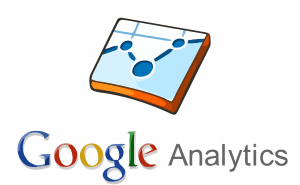
Help with Google Analytics
Google Analytics is one of the most vital tools available to marketers in today’s online marketing world. Success for most businesses these days involves a degree (and in most cases a large degree) of understanding how your customers and prospects are finding your site and what they do when they arrive. What call to actions are most effective? What pages do they spend most time on? What don’t they like – and where do they leave your site? Clearly to be able to ascertain that information you need to know how to use Google Analytics!
However if you don’t know what all the terms mean and what tools do what, you can spend more time trying to work it all out rather than getting some meaningful data and intelligence that will help you get more business from your online activity.
Google Analytics : Explanation of Terms
A key part of understanding how to use Google Analytics is knowing the terms that Google uses to describe various parts of the product. We’ve put together an insider’s guide that explains what they all mean:
Advanced Segments: A feature which allows you to pick out certain types of traffic when you’re putting together a report. For example you can view users who used mobile browsers or arrived from social media platforms
Alerts: Notifications which you can set up to arrive when particular things happen on your website. You can arrange to be notified when someone visits a certain page or clicks a certain link. You can also be notified when certain patterns emerge, for example during traffic spikes.
Benchmarking: Allows you to compare the performance of your website against the performance of your competitors
Bounce Rate: The number of people who arrive on your website and then leave after viewing only one page. Ideally you’ll want this to be as low as possible otherwise you could see your search ranking drop – you’ll appear lower down the results.
Branded Traffic: A tool which allows you to discover how much of your traffic comes from people looking for your specific brand rather that general terms about the types of products or services you offer.
Conversion: When someone visits your site and completes a particular task or goal (for example buying a product or filling in a form – you can define these goals yourself).
Click Through Rate (CTR): Measures the success of an online advertising campaign, showing the number of users that clicked on a particular link against the number of people who saw that link).
Direct Traffic: Traffic that comes from people typing your website URL into their browser (instead of arriving from a search engine, clicking a link on a social platform etc.)
Engagement Rate: The amount of time a visitor spends on your website (the higher the better)
Event: A facility you can use to track visitors who perform key tasks on your website such as filling in a form or signing up to an email newsletter.
Exit Rate: Tells you how many people leave your site on a particular page. This data can be very useful in tracking which pages on your website are losing you customers..
Filter: Allows you to narrow down a report to particular types of data (for example by country or platform).
Funnel: A step-by-step representation of your user experience that allows you to see where people are leaving the buying process
Goal: Actions you want to track such as clicking a particular link or purchasing a particular product – actions that mean something to your bottom line hopefully!
Goal Conversion Rate: The number of people who visit a page divided by the number of people who complete a specific, defined activity on that page
Organic Traffic: Visitors who come to your site through organic results on a search engine
Paid Traffic: Visitors who come via a pay-per-click advertising campaign
Page View: The number of pages a visitor looks at whilst browsing your website
Parameters: Tags you can add to URLs to allow you to better track traffic from particular sites or pages. For example you can add a tag to URLs you share on a particularFacebook page to track clicks from it.
Referral Traffic: Visitors coming to your site by clicking links on other websites.
Sessions: The number of times people have come to your website. This is distinct from unique visitors, which counts everyone only once.
Visitor Flow: A visual analysis of how visitors pass through your site. This can be daunting at first but you’ll achieve much higher conversion rates if you understand the journey your visitors make.
Do you have further questions about how to use Google Analytics? We’d love to help you answer them. Get in touch with one of our digital marketing scientists today and we’ll help you use the power of analytics to bring more prospects to your website, and drive more conversions as a result.


